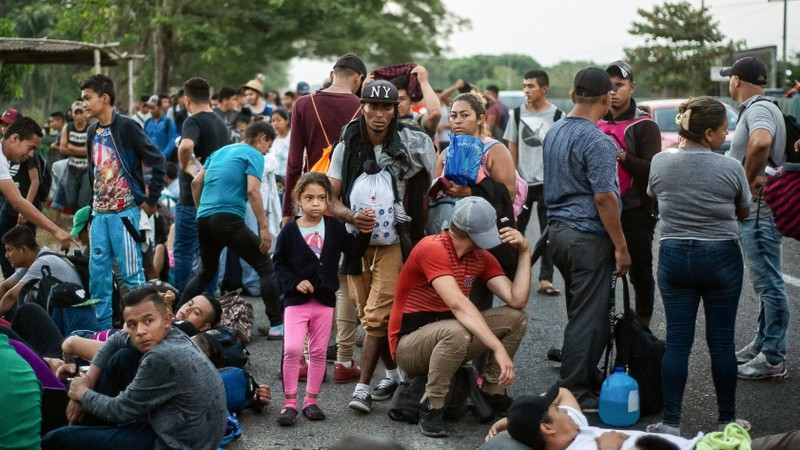Thousands of people gathered at the border area waiting for the expiry of Title 42 on the night of May 11 (local time), a rule that restricted the entry of migrants from Mexico to the US to prevent the spread of the COVID-19 pandemic, in order to seek legal immigration.
Title 42 allowed US border security to deny entry to migrants seeking asylum because of the pandemic, so the lapse of the provision has led to a wave of migrants trying to cross the Mexican border to the US. According to data from the US Border Patrol, Title 42 helped them prevent 2.4 million migrants from entering the US in 2022.
Cities in Texas such as El Paso, Brownsville, and Laredo recently declared a state of emergency as hundreds of migrants, mostly from Latin America, arrived at the border.
Many people are trying to cross the Rio Grande River in Brownsville, Texas, hoping to easily immigrate to the US after surrendering themselves to the Border Patrol. However, many migrants do not understand that deregulation is not an open door to facilitate migration.
The US government repealed Title 42 but activated Title 8. US Secretary of Homeland Security Alejandro Mayorkas emphasised that Title 8 imposes severe sanctions on illegal immigrants. If caught and ineligible for asylum, they could be deported, banned from entering the US for five years, or face criminal charges.
Immigration is one of the most pressing issues in the US. In recent days, more than 10,000 people from Mexico tried to cross the border into the US every day before Title 8 takes effect.
According to the border force, more than 10,000 migrants were arrested each day from May 8 – 9 as they tried to cross the Mexican border into the US. Border guards are allowed to release migrants at border cities if US Immigration and Customs Enforcement (ICE) and charities cannot afford the migrants.
Mexican officials said violence broke out at the intersection between Reynosa, in the state of Tamaulipas (Mexico), and Pharr City, in Texas (the US), on the morning of May 10 when Mexican soldiers clashed with an armed group suspected of being traffickers. In March 2023, a group of people tried to cross a bridge after hearing rumours that they would be allowed to enter the US.
To prepare for the scenario of a spike in migrant flows, the administration of President Joe Biden has mobilised 1,500 soldiers and thousands of police, special agents and investigators from the US Department of Homeland Security, the Immigration and Customs Enforcement (ICE) and others to ensure security and order for the border area.
Meanwhile, Texas Governor Gregg Abbot directed hundreds of troops from the National Guard to the border area with Mexico.
Abbot said the US National Guard is authorised to mobilise the necessary resources, including Black Hawk helicopters and C-130s, as well as to deploy reinforcements to the Texas Tactical Border Force in hotspots along the border, ready to prevent large-scale migrant groups from trying to enter the US illegally.
Towns along the 3,100km border between the US and Mexico are also preparing for the situation that thousands of migrants trying to cross the border into the US every day.
In that context, the Republican-controlled US House of Representatives just passed the border security and immigration bill 2023. This bill re-applies some measures of the administration of former President Donald Trump, such as restarting plans to build a wall on the US-Mexico border and strengthening measures to limit refugees. However, it is difficult for the bill to pass through Senate with the Democrats’ majority of seats and President Biden’s veto power.
















